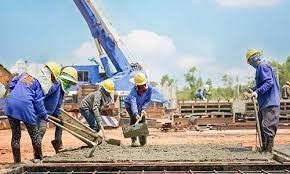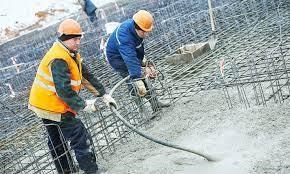You may have seen several videos that tell you that you can get concrete done in a few steps to achieve it. As good as that may be for small structures, you need a professional concreter or service contractor to handle significant construction projects. Indeed, it is a strong temptation to want to attempt the concrete works by yourself, especially if you have some simple tools you can use. However, not all construction works fall under the DIY category and may require a high level of expertise in the long run.

For instance, you cannot entrust the construction of a large bridge into the hands of amateur builders or engineers. You need a professional who can interpret the bridge design model and replicate it from theory to real-life edifice. At the same time, you need a budget to be able to do such constructions. But in the event of a small project with a limited budget that cannot afford workmanship, you may decide to try it the DIY way.
This article discusses some of the dangers you may face when constructing concrete in a DIY way.
Dangers of DIY Concreting
1. Lack of the right equipment
When doing construction in the DIY way, there is a lot of improvisation of tools and equipment due to being an amateur. Consequently, the lack of the right equipment that is fit for the work is an integral part of your success in DIY construction. Another reason why DIY may be tricky is that many high-quality construction pieces of equipment are costly to acquire.
Alternatively, you may think of hiring some of this equipment. Still, the outright purchase may take a chunk of your concreting budget. Whereas, without some of this equipment, you may eventually waste a lot of time and effort to achieve what you plan to do. Similarly, suppose you fail to secure some of this equipment. In that case, you may discover that it is more difficult to do construction in a DIY way. However, a professional job requires specialist concreting tools. Click here to learn more about construction.
Time and Money
Another factor that should cause anyone to be wary of DIY construction is it’s time to do it yourself. Many people think it is cheaper to try out specific tasks by yourself, so there are DIYs. It will cost more time to complete the same job when an amateur is handling it than in the hands of a professional. For instance, it takes time to prepare, mix and pour the prepared concrete into the desired cast.
In addition, it takes a relatively more effort to get this task done, especially if you don’t do it every time like a professional. So, if you don’t have the physical energy that it takes, you should reconsider DIY construction for concrete services. Ideally, a professional concrete builder can prepare and pour out concrete in no time when constructing a desirable structure. What is unique about pouring, someone might say?
It takes skill to pour out concrete evenly and smoothly into a mold to make a slab. Therefore, to save time and money, you may have to seek the expertise of a professional builder or concrete service expert. Concreting services are applicable in solving construction problems and making the necessary tools and equipment available for use.
Insufficient Preparation
Without adequate physical preparation for construction with concrete, you may bring too much physical stress to your body. You may therefore have to reinforce the concrete slab or structure you are trying to build. In addition, the concrete slabs can be weighty to deal with, and this is a part that many DIY concrete contractors hardly prepare for. Therefore, you need to prevent stress fractures by creating a reinforced concrete structure.
Don’t forget that it is also part of your preparation to lay out the slab’s portion. And that preparation is more than simply clearing the land and removing any vegetation. You should also ensure the land is thoroughly compacted ad enclosed in a formwork. Depending on the desired strength and durability, you may need to add some reinforcement to the concrete structure.
Incorrect Proportion of Mixture
As a DIY concrete worker, you may also need to get your proportion of each component of your concrete mixture in place. The most common mistake that DIY constructors make is adding excess water to the mix, equivalent to a poor final finish. The excess water weakens the strength of the final finished slab while also affecting the look of the final output.
Similarly, suppose you want to get the final mix correctly in your DIY construction. In that case, you need to pay attention to the actual details of the components to mix together. However, a professional concreter knows, with time and use, how much of water, cement, gravel, and stones he needs to add to produce what he wants. But a DIY builder may struggle with it, especially if the manual or tutorial does not clearly state so.

Safety and Health Issues
One notable fact that many DIY concrete videos may not tell you is how unsafe it is to handle cement and concrete. For instance, some of the concrete ingredients, such as limestone, in making cement are highly alkaline. If they find their way to the eye, ear, respiratory system, or even the skin, they can cause high irritation. At the same time, this complication can lead to further long or short-term health issues to your well-being. Whereas such problems are avoidable if you do it with the help of a professional builder.
Conclusion
On a final note, you need professional and experienced workers to handle your building projects in the light of commercial concreting. Meanwhile, BKH Group is a fantastic company that can serve you with tremendous construction through concreting and related services. You can trust this company with a high level of quality building projects and other associated services. In the plan to further beautify your home or build commercial concrete edifices, feel free to contact us and make necessary inquiries.





